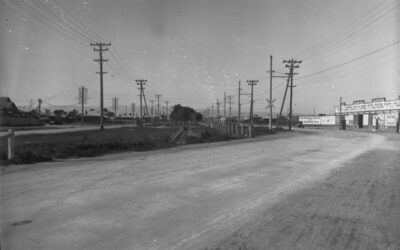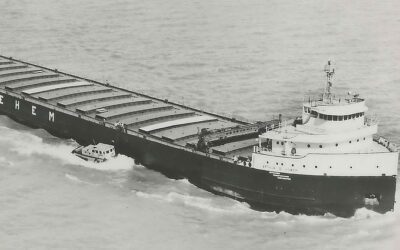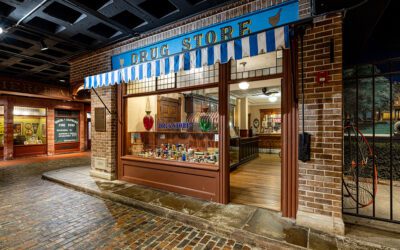
(Image via The 'Gander)
MICHIGAN—With so many wonderful locales to explore across Michigan, we recently asked ‘Gander readers where they would choose to go if they could spend an all-expense-paid summer weekend in any Michigan city.
Without a doubt, the top choice among readers was Mackinac Island.
That shouldn’t come as a surprise, as the island has been voted the best summer travel destination in the US more than once.
There’s a good chance many of us are planning a trip out to the island sometime soon. So, with that in mind, we’ve put together this article to serve as your ultimate guide to Mackinac Island. Even if a trip isn’t in the cards for you, I hope there’s enough packed in here to make you feel like you visited.
From its rich history to the best locations to explore, join us on a virtual trip around Mackinac Island.
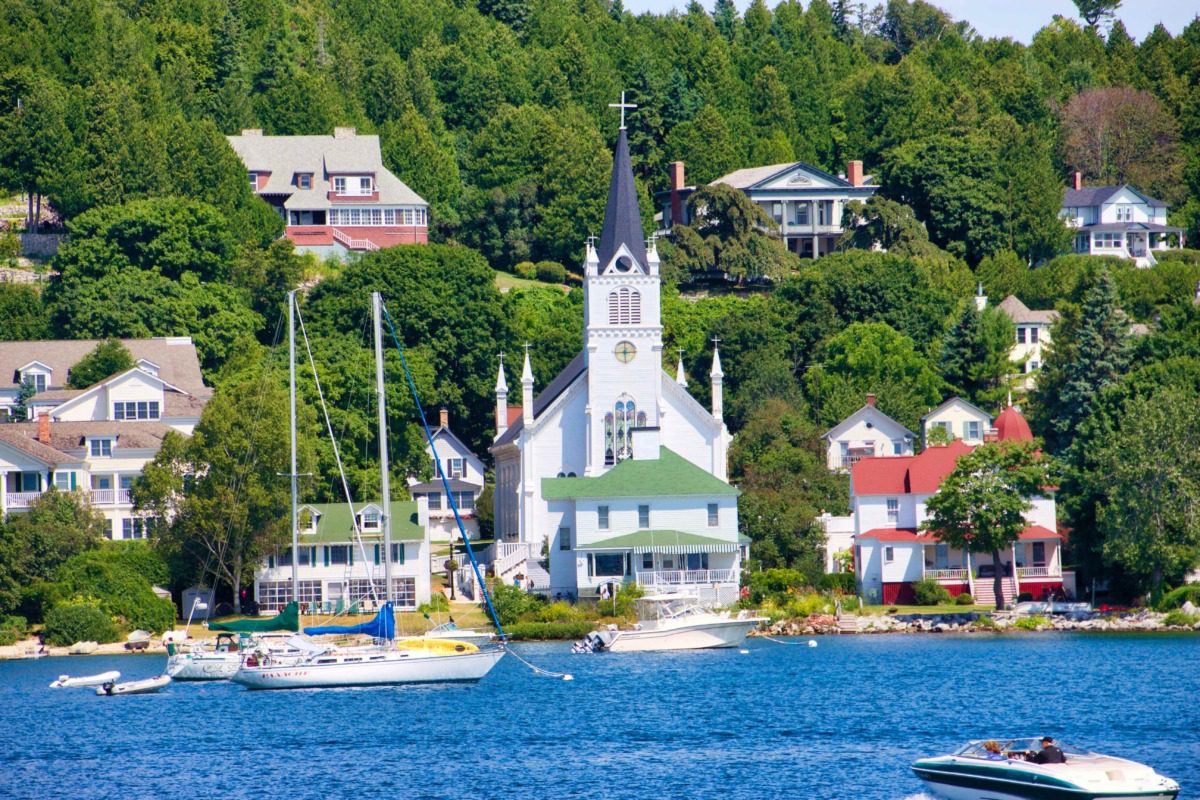
Mackinac Island. (Source: Craig Washington via Unsplash)
The story of Mackinac Island
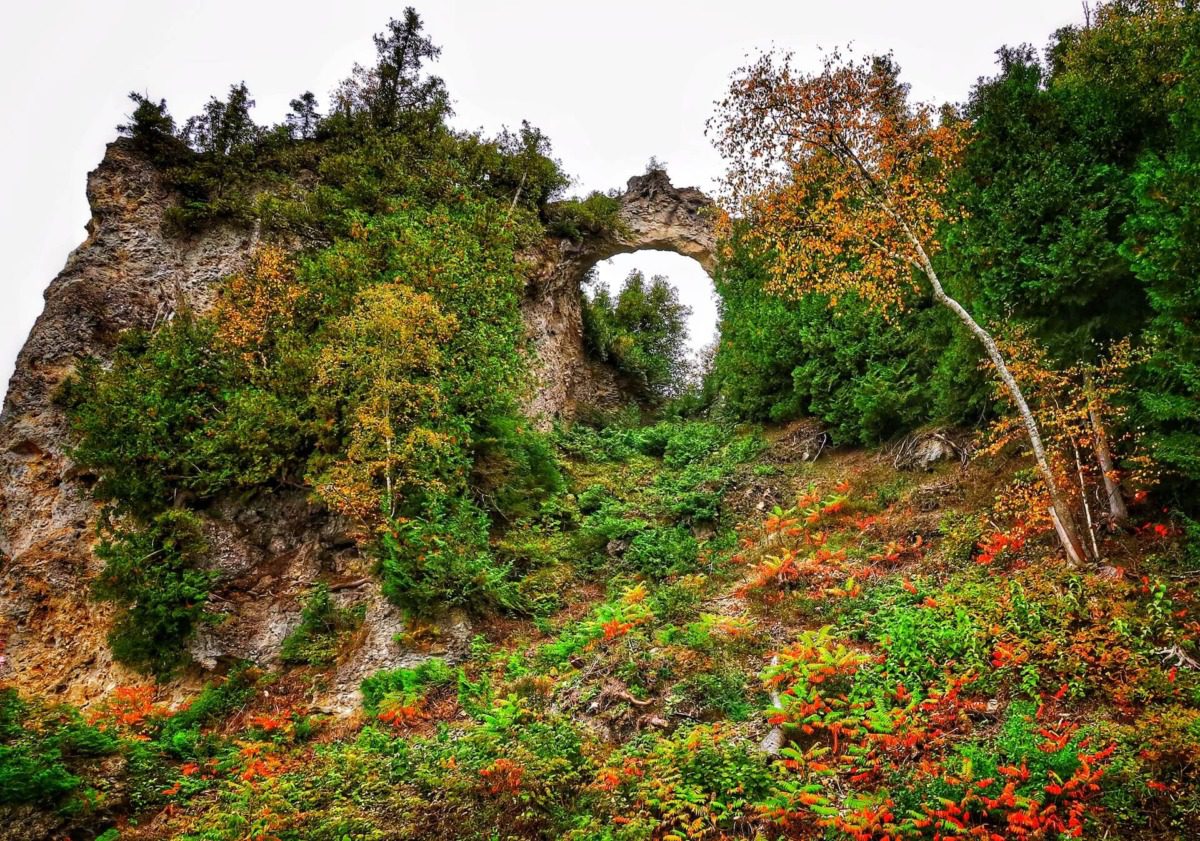
Arch Rock on Mackinac Island. (Source: Lori Stevens on Unsplash)
First, a bit of history.
Long before European settlers arrived in what is now Michigan, Indigenous tribes called the Great Lakes region home. Northern Michigan was home to several Anishinaabe tribes, also known as the Three Fires Council.
The council comprised three tribes: The Ojibwe, the Odawa, and the Potawatomi.
There’s a particular island in Michigan that holds incredible importance to the Three Fires: Michilimackinac, a name that means Big Turtle to the Odawa. It was the preferred meeting place for the Three Fires. Along with convening with one another, the Three Fires also met with other Anishinaabe nations there.
If you haven’t guessed by now, this place is also known as Mackinac Island. To the Odawa, Michilimackinac is considered the birthplace and center of the world. All across the island there are places of great significance to the tribes of the Anishinaabe—like Arch Rock (seen in the photo above), which is considered a bridge from the Earth to the afterlife.
In the early 1600s, French explorers began settling in the Great Lakes region as part of their territory known as New France. In 1634, explorer Jean Nicolet was crossing the Straits of Mackinac when he spotted Mackinac Island, but it wasn’t until 1670 that the first Jesuit Mission was established on the island. This mission was the central location of what would become a flourishing fur trade in the region.
At this point, many of the area’s original Indigenous inhabitants began to be pushed out. In the early 1700s, most local Indigenous people moved south.
By 1720, the fur trade had become a primary economic driver for New France. To protect their trade, the French established an outpost across the straits—Fort Michilimackinac—on the mainland of the Lower Peninsula in what is now Mackinaw City.
The next decades would mark several shifts in control of the area.
In the 1760s, the French relinquished control of the area to the British following the French & Indian War. But this control wouldn’t last long. During the War of 1812, the British relocated Fort Michilimackinac to Mackinac Island and renamed it Fort Mackinac. At this location, they repelled an attack by American troops in the Battle of Mackinac.
This victory was short-lived, as American forces eventually defeated the British and gained control of the area after the war.
It was at this point that Mackinac Island began its transformation into what we know today.
As its military significance began to diminish, the locals of the island began to shift their attention to tourism. In 1875, US Congress designated part of Mackinac Island as a national park (the second one in the nation’s history, after Yellowstone National Park). Mackinac National Park existed for twenty years, with the soldiers at Fort Mackinac serving as park rangers. In 1895, When the US military decided that it no longer needed to man Fort Mackinac, Michigan’s state government took over, and created Mackinac Island State Park. It was the first public space in the country designated as a “state park.”
As the island transitioned into the 20th century, entrepreneurs built hotels and other lodging to facilitate the influx of tourists. It also became known for one thing: Fudge.
The Murdicks are the most famous fudge family. They opened the first fudge shop on the island in 1875. By the 1920s, the island’s downtown had transformed into a fudge destination, with many businesses putting on shows through big windows so island visitors could witness the entire fudge-creating process.
Read more: The history of Mackinac Island fudge
Now in the modern age, visiting Mackinac Island is like being transported to another era. The island oozes history and charm at every corner. With its carless roads, horse-drawn carriages, and, of course, the fudge, there’s no shortage of things to do during your stay.

Mackinac Island’s bustling downtown. (Source: Beverly Kimberly on Unsplash)
Put these 13 Mackinac Island activities on your bucket list
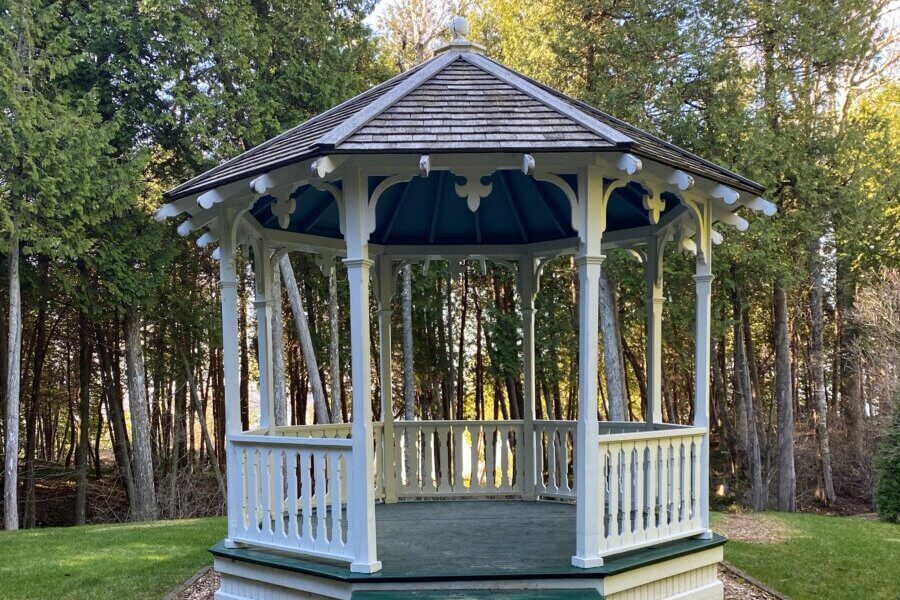
The famous “Somewhere in Time” gazebo. (Source: Isaac Constans / The ‘Gander)
On treasure maps, X marks the spot. But on Mackinac Island, treasures abound, and they come in many different forms depending on who you ask—fresh fudge, historical nuggets, and natural beauty.
Here are some historic places on Mackinac Island that that you shouldn’t miss:
🏛️ Find where “Somewhere in Time” was filmed
📖 Visit Anne’s Tablet for the view and history
🏔️ Climb to the top of Robinson’s Folly
🪖 Make Your Way up to Fort Holmes
🚲 Bike the only car-free state highway in the country
🍺 Have dinner and drinks at the Mustang Lounge
🌅 Enjoy a sunset on Sunset Rock
🪑 Read a book and enjoy the view from the Grand Hotel porch
For more info on all of these locations, check out our full article here.
The 7 wonders of Mackinac Island: Where to find some of Michigan’s most amazing natural beauties
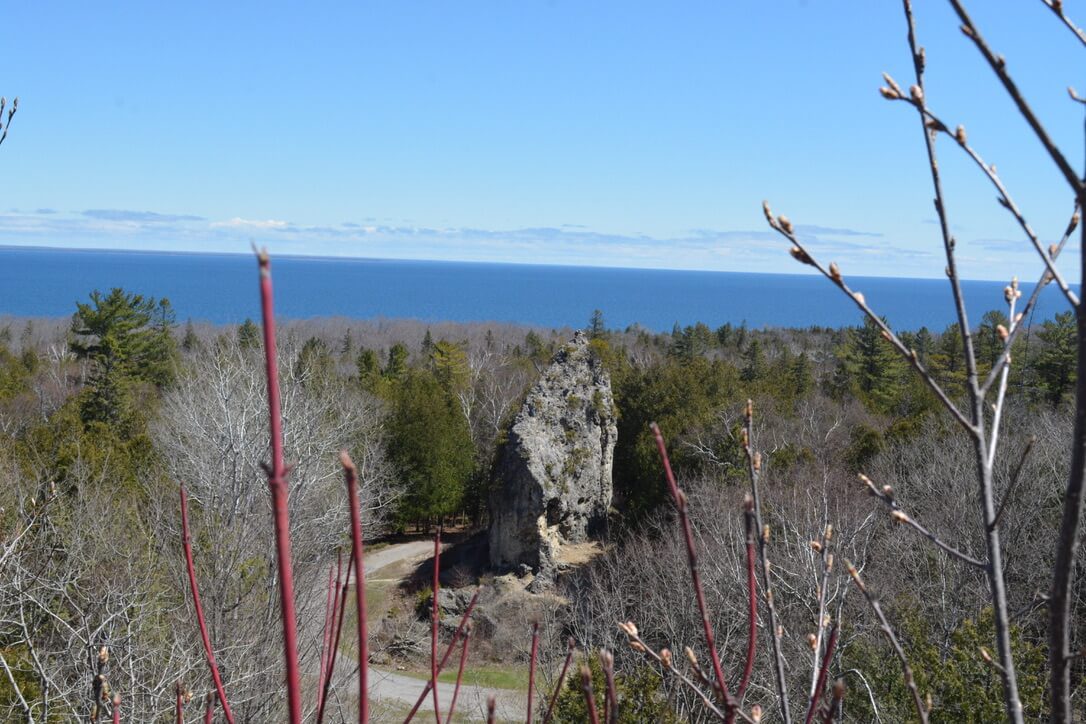
Sugar loaf. (Source: Isaac Constans / The ‘Gander)
Mackinac Island is the perfect place to forget the world—no traffic, no trouble, and ample fudge (we’ll get to that soon).
But it’s also the perfect place to connect with the world—as in, the earth under your feet. Located at the intersection of lakes Huron and Superior, the island is sculpted perfectly for geological observation.
Check out these seven must-see geological features on Mackinac Island:
Mackinac Island fudge: A guide to 7 shops with the most mouth-watering treats

Photo of fudge on Mackinac Island. (Source: Canva)
No guide to Mackinac Island would be complete without mentioning its fudge.
Want to eat a pound of fudge for dinner? We won’t blame you. See which shop best tickles your fancy, with a taste of the reviews for each.
Reviewers say: “Excellent fudge and it’s the original fudge shop on the island, not an imitator. They make it in front of you on marble slabs and have 12-15 different options for fudge. The staff were super friendly as well. If it’s your first time on the island, it’s a must-try!” – Josh Scott, Google Reviews
Reviewers say: “Absolutely love this place. From the interior/exterior look & the wonderful smell when you walk by. The fudge and ice cream is absolutely delish! Can’t go wrong with any flavor!” – Pamela Rubright, Google Reviews
Reviewers say: “Just as they advertise, the fudge really is the creamiest on the island! Hands down, the best fudge on Mackinac and by far the most flavors!” – Danny Strayer, Google Reviews
Reviewers say: “A special treat is a scoop of ice cream with their decadent dark chocolate hot fudge sauce on top. My personal favorite is the hot fudge cream puff and I would take the ferry just for this.” – Nicole Sunderland, Eatlivetraveldrink
Reviewers say: “What a treat it was to buy some fudge from May’s! I found this place on TikTok of all places. Made the trek to the island to try some of this fudge and I wasn’t disappointed. The fudge is so creamy! I love the interior of the shop. I could almost feel, taste and smell the history.” – Jason T, Google Reviews
Reviewers say: “The fudge is phenomenal! The staff is friendly, helpful, and offered samples if I had questions about a particular flavor. This was my first visit to Kilwins and from this point forward it will be my only shop that I purchase fudge from on Mackinac Island. Thank you for helping to make our trip a great one!” – Rose Magyar, Google Reviews
Reviewers say: “Best fudge in Michigan! Been coming here for years the fudge is amazing. They also have excellent taffy, candies, and assorted chocolates. The chocolate truffles are particularly good. If you get there early enough, you can see them making the fudge and cooling/cutting it into the ‘loafs’ we are used to buying.” – Patrick James, Google Reviews
For the full story, including a history of each location, head here.
Have a great trip!

The Grand Hotel on Mackinac Island. (Source: Steve Saunders on Unsplash)
While we’ve just touched the surface of what Mackinac Island has to offer. I hope this guide can serve as the launchpad for your next trip there.
Thank you for joining me on this virtual trip.
More stories:
Cannons, tea, and movies: The 10 things to do at Michigan’s Fort Mackinac
Meet America’s most haunted town: 5 ghost stories from MI’s Mackinac Island
That one time in Michigan: When the Mackinac Bridge was built
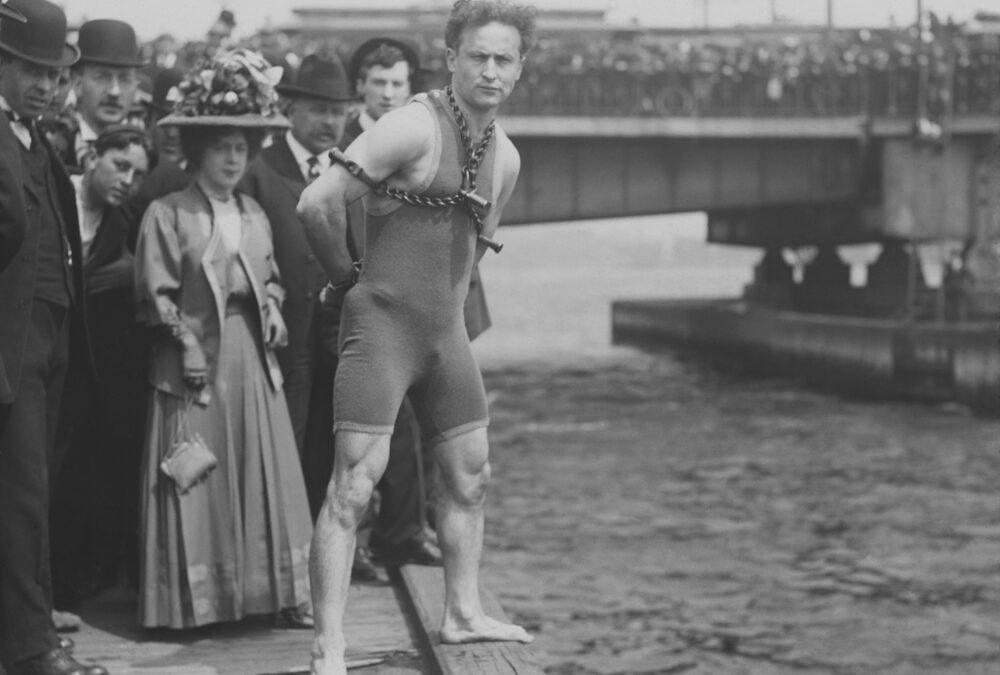
7 creepy facts about Michigan they don’t teach you in school
Immerse yourself in the spirit of the season with seven creepy (or simply unexplained) facts about Michigan that textbooks ignore. Disappearing...

That one time in Michigan: When an official funeral was held for frozen pizzas
The next time you’re forced to discard a recalled product, draw inspiration from one of Michigan’s most inventive pizza producers. We’ve all...
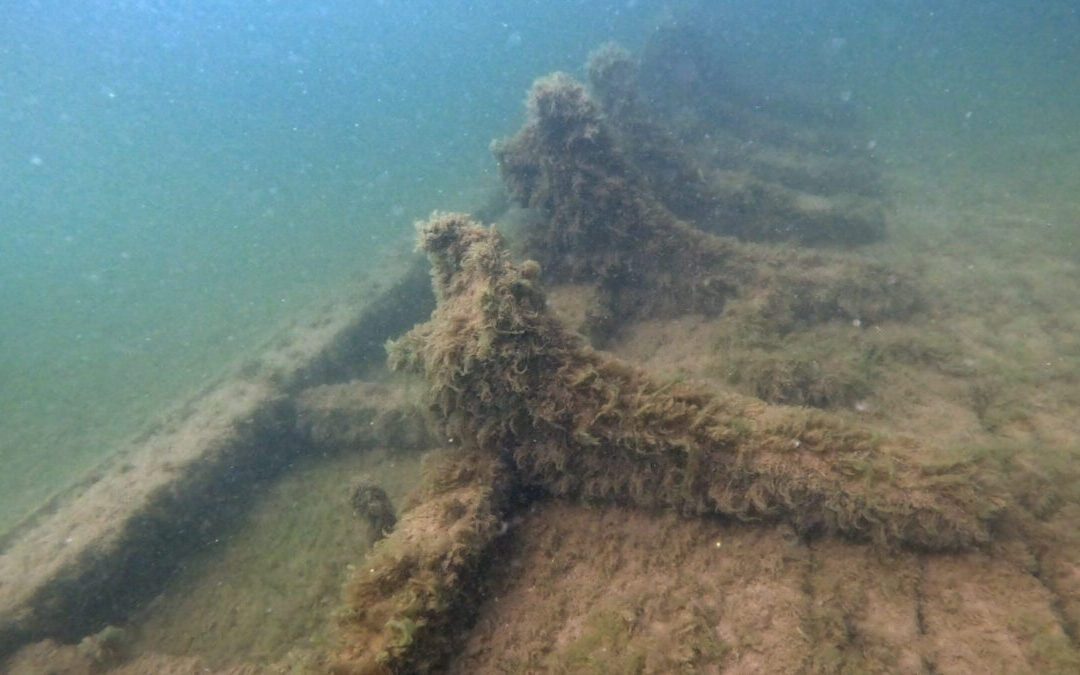
Great Lakes features mystery triangle blamed for disappearances. Is the legend true?
Beware when heading out onto Lake Michigan—legend says ships are known to vanish in what's known as the Lake Michigan Triangle, or do they? The area...
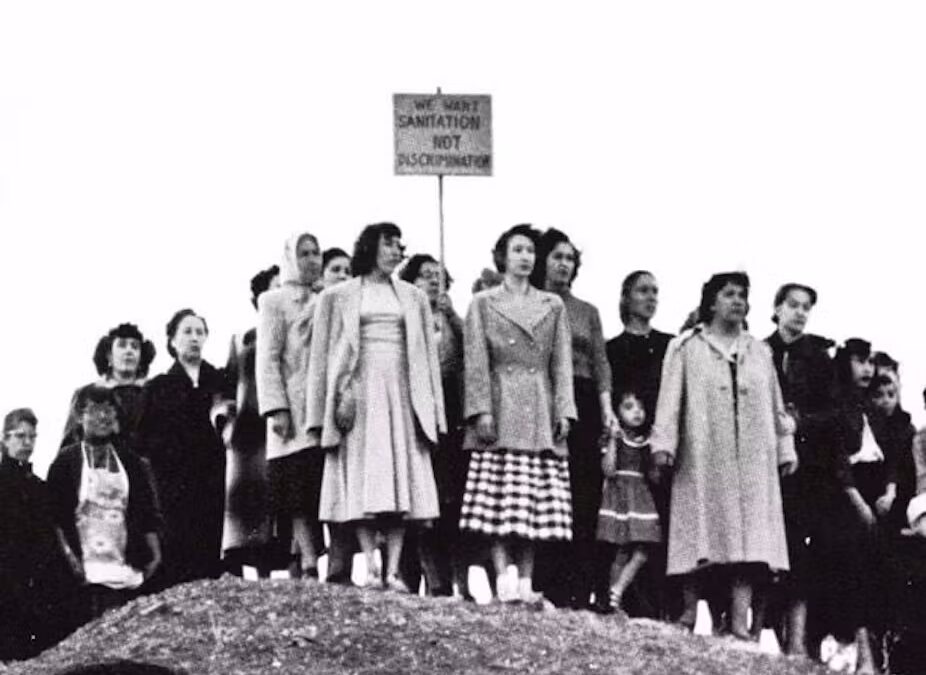
5 unsung films that dramatize America’s rich labor history
By Peter Dreier, Occidental College The U.S. is in the midst of a new upsurge of union organizing. Is a Hollywood drama about angry Starbucks...
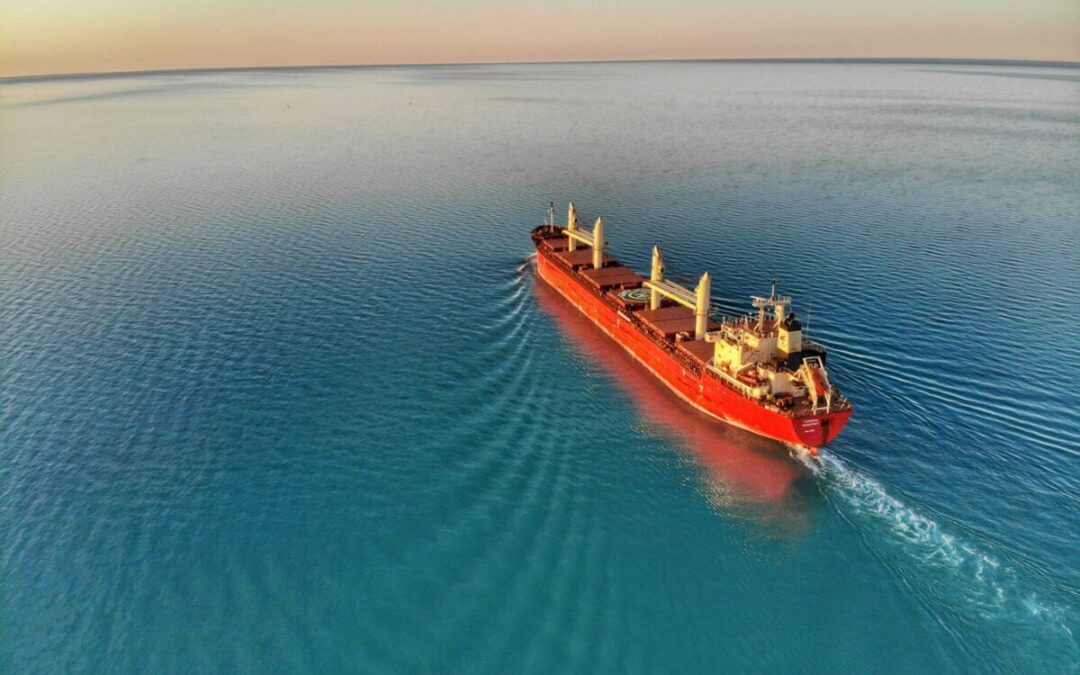
St. Clair: The storybook Michigan town with a surprising world record
St. Clair, Michigan, not only exudes charm and offers plenty of adventures, but it also boasts an impressive world record. As a lifelong resident...



